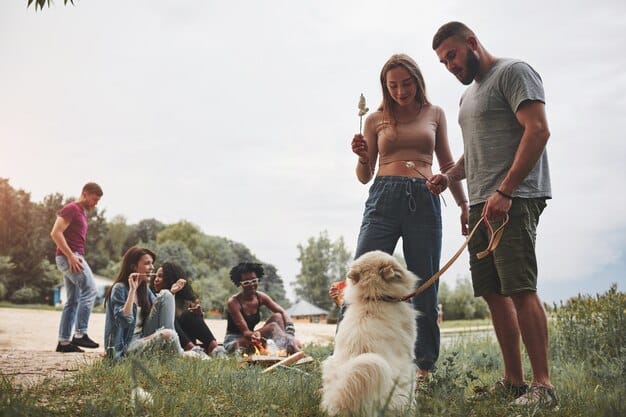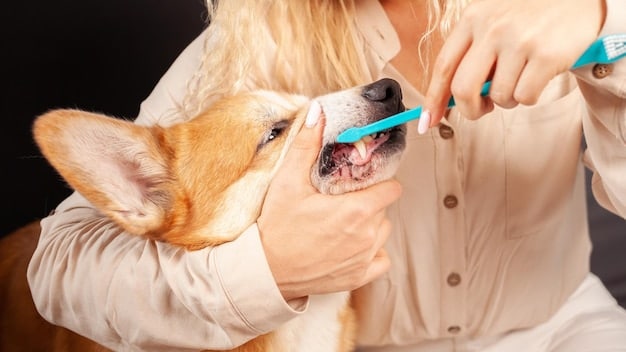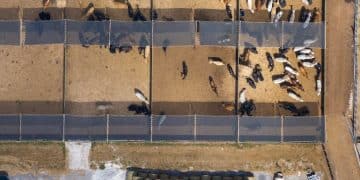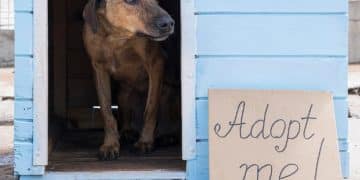Community Outreach: Educating Public on Responsible Pet Ownership

Community outreach programs dedicated to educating the public and promoting responsible pet ownership are vital for improving animal welfare, reducing pet overpopulation, and fostering stronger human-animal bonds within local communities.
Local animal rescues play a crucial role in our communities, and one of the most impactful ways they contribute is through community outreach programs, educating the public and promoting responsible pet ownership. These programs are essential for creating a more compassionate and informed society when it comes to animal welfare.
Understanding the Importance of Community Outreach for Pets
Community outreach extends the reach of local animal rescues beyond simply providing shelter. It addresses the root causes of pet abandonment and neglect, creating a stronger community.
These initiatives are incredibly important because they focus on promoting education and responsible pet ownership. By engaging directly with the public, rescues can provide essential information and resources.
Benefits of Community Outreach
There are numerous benefits to implementing community outreach programs focused on responsible pet ownership.
- Reducing Pet Overpopulation: Spaying and neutering campaigns help control the number of unwanted animals.
- Preventing Animal Neglect and Abuse: Education about proper pet care and training.
- Promoting Pet Adoption: Showcasing adoptable pets and dispelling myths about shelter animals.
Effective community outreach programs help foster empathy and respect for animals, creating a more humane community for both pets and people.

These programs go beyond basic care, addressing issues like responsible breeding, microchipping for identification, and the importance of regular veterinary check-ups.
Empowering pet owners with knowledge contributes to happier, healthier lives for their animal companions.
Key Components of Effective Outreach Programs
Effective community outreach isn’t just about raising awareness; it requires a multi-faceted approach incorporating various strategies and tailoring programs to the specific needs of the community.
Several key ingredients contribute to the success of these programs, ensuring they resonate with the intended audience and achieve lasting impact.
Education Workshops and Seminars
These sessions offer in-depth information on various aspects of pet care, from nutrition and exercise to common health problems and behavioral issues.
Workshops provide a structured learning environment where attendees can ask questions and receive personalized advice.
Spay/Neuter Clinics and Voucher Programs
Addressing pet overpopulation is a critical part of responsible pet ownership. Affordable or free spay/neuter services allow owners to reduce the risk of unwanted litters.
- Low-cost Options: Clinics providing subsidized spay/neuter services.
- Voucher Programs: Offering financial assistance.
- Mobile Clinics: Reaching underserved communities.
Removing financial barriers empowers more pet owners to make responsible choices about pet breeding and health.
Microchipping initiatives are equally important, offering a permanent form of identification that significantly increases the chances of reuniting lost pets with their owners.
How to Organize a Community Outreach Event
Organizing a successful community outreach event demands careful planning, attention to detail, and a strong team of dedicated volunteers. These events are crucial for interacting with the public.
Planning is crucial for a positive event that educates and fosters responsible pet ownership.

Setting Goals and Objectives
What do you hope to accomplish with your outreach event? Increase adoption, promote spay/neuter efforts, or educate the public?
Having clear goals guides decision-making throughout the planning process.
Choosing a Location and Date
Locations with visibility and accessibility are essential. Consider local parks, community centers, or pet-friendly businesses.
- High-Traffic Areas: Choose locations where many people walk by.
- Accessibility: Ensure the location is easily reachable.
- Weather Considerations: Plan for shade and water.
Collaborating with other organizations broadens your reach and makes events more impactful.
Working together helps share resources and expertise, ultimately benefiting the animals and the community.
Measuring the Impact of Outreach Programs
Tracking the effectiveness of these initiatives showcases the value that they bring to the community.
By tracking and evaluating the results of community outreach events, organizations can refine their strategies.
Tracking Adoption Rates
Monitor the number of adoptions before and after outreach events to assess the direct impact on pet placement.
Increased adoption rates indicate successful outreach. Comparing data shows trends over time.
Assessing Public Knowledge
Surveys can gauge the public’s understanding of pet care, responsible ownership, and related issues.
Surveys provide valuable insights into what the community knows and what areas need more focus.
Quantifiable data helps improve future outreach programs to achieve bigger goals.
Collaboration with Local Businesses and Organizations
Effective collaborations amplify the reach and impact of outreach programs, tapping into diverse expertise and resources within the community.
When multiple stakeholders unite around a shared goal, the results can be transformative.
Partnering with Veterinary Clinics
Veterinarians often provide discounted services, expert advice, and resources for community events.
- Reduced-Cost Services: Vaccinations, microchipping, and checkups.
- Educational Seminars: Vets can share knowledge on pet health.
- Donations: Supplies and financial support for outreach.
Veterinary clinics offer resources that boost the outreach and educate the public.
Working together strengthens community events, making a positive impact.
Overcoming Challenges in Community Outreach
Despite the many benefits, implementing and sustaining community outreach programs presents unique challenges.
Recognizing and addressing these obstacles proactively is essential for maximizing the effectiveness of outreach efforts.
Limited Resources
Many local animal rescues operate on tight budgets, making it difficult to allocate sufficient resources to outreach initiatives.
- Creative Fundraising: Events, crowdfunding, and grants.
- Volunteer Recruitment: Engaging community members to help.
- In-Kind Donations: Securing supplies and services from local businesses.
Innovative solutions are often necessary to overcome budget constraints.
By thinking outside the box, animal rescues can ensure that outreach efforts remain viable and impactful.
| Key Point | Brief Description |
|---|---|
| 🐾 Education | Workshops promote responsible pet care. |
| 💉 Spay/Neuter | Clinics reduce pet overpopulation. |
| 🤝 Collaboration | Partnerships boost outreach impact. |
| 📈 Measuring | Tracking ensures effective strategies. |
Community Outreach Programs FAQ
▼
A community outreach program involves activities organized to educate the public and promote responsible pet ownership. It can include workshops, adoption events, and awareness campaigns.
▼
Responsible pet ownership ensures the health, safety, and well-being of pets. It includes providing proper nutrition, medical care, training, and a safe environment.
▼
You can get involved by volunteering your time, donating supplies or money, fostering animals, or adopting a pet. Contact local rescue organizations for opportunities.
▼
Spaying or neutering prevents unwanted litters, reduces the risk of certain health problems, and can improve your pet’s behavior. It also helps control pet overpopulation.
▼
These programs offer affordable spay/neuter services, educate the public about the importance of sterilization, and promote adoption, all of which help control pet overpopulation.
Conclusion
Community outreach programs are invaluable for fostering a culture of responsible pet ownership and compassion. By educating the public, providing resources, and collaborating with local stakeholders, animal rescues can create safer, healthier, and happier communities for both pets and people. Support your local rescues and help promote responsible pet ownership today.





